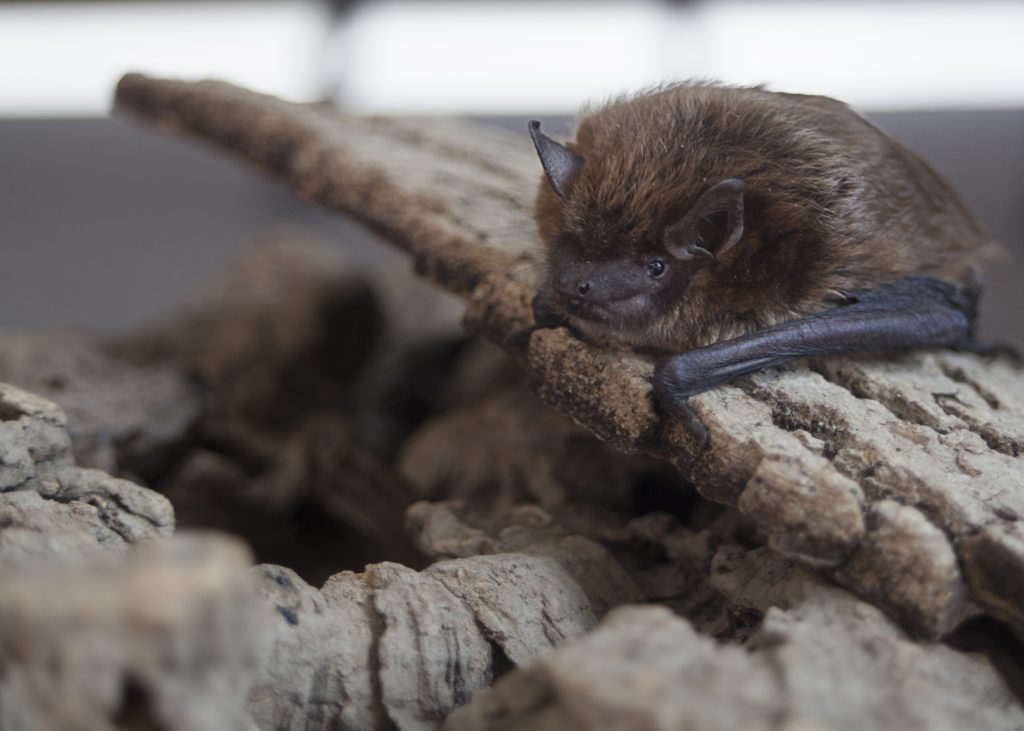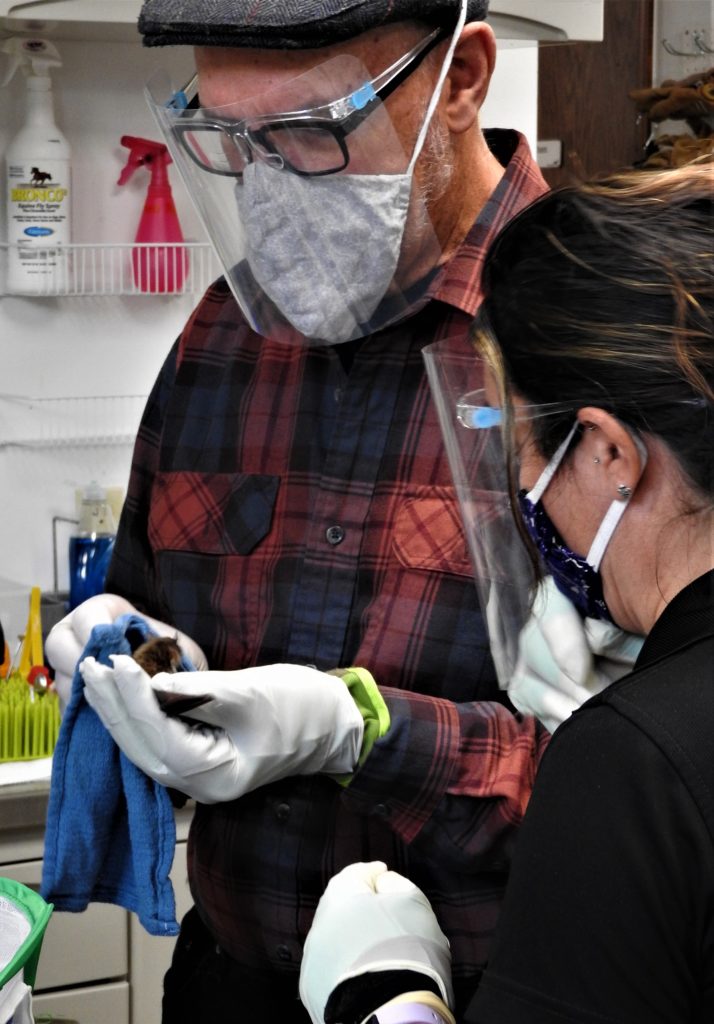As Ohio bats prepare to migrate and hibernate this fall, scientists crunch the numbers on one of the most devastating wildlife disease epidemics in recorded history.

With approaching seasonal temperature drops and the disappearance of summer insects, Ohio’s bats begin a dramatic transition in the fall months to adjust to winter climate changes and vanishing food supplies. New threats, however, are also claiming high mortality rates for certain species of bats susceptible to a deadly fungal disease known as white-nose syndrome.
A new study published in Conservation Biology this spring has shown white-nose syndrome has killed over 90 percent of northern long-eared, little brown and tri-colored bat populations in less than 10 years.
All ten of Ohio’s bat species and 44 of the 47 bat species found across the United States have at least one thing in common—they eat bugs. And these flying insectivores are very good at what they do. Hunting throughout the night from April through September, scientists have discovered that one small bat can catch up to 1,000 or more insects in a single hour. Nursing mother bats are the superstars of the hunt, capable of catching more than 4,000 insects in one night. After temperature dips that cause insects to die off or hunker down in survival mode, bats must hibernate, migrate, or both, to survive until the spring.
Four of Ohio’s bats—red, evening, silver-haired, and hoary—are known as solitary bats. They are migrators, and some are known to set off on long journeys to warmer areas where they can find insects. The striking red bat (the only Ohio species with males and females that look different), might migrate south, then become inactive, hibernating in leaf litter. Red bats stay warm by wrapping up in their extra-large, densely furred tail membranes. There is a lot scientists don’t yet know about bat migration, so these mysterious and perilous annual trips remain an important area of study for bat biologists.
Big brown, little brown, tri-colored, small-footed, northern long-eared and the federally endangered Indiana bat, are all year-round residents of Ohio. Known as colonial bats, they might make short migrations to places where they will spend the winter months.
Caves and abandoned mines, where temperatures remain stable at 45 to 50 degrees, as well as rock crevices in cliff walls and abandoned railroad tunnels, provide critical havens where colonial bats can hibernate, awaiting the spring arrival of insects that are their only food. But when white-nose syndrome arrived in New York in 2007 and spread to 36 states and seven Canadian providences, these cool, moist winter hibernacula became mass death traps for formerly common bat species.
A Devastating Epidemic
It has been 15 years since scientists in New York discovered the cold-loving fungus, Pseudogymnoascus destructans (Pd), which causes white-nose-syndrome (WNS). Entering Howe’s Cave near Albany, New York, for their annual winter bat colony count in 2007, the researchers expected to find bats hibernating on the cave ceiling as usual.
What they found instead was surprising, as most of the bats were dead on the floor of the cave. White-nose syndrome disturbs the bats’ hibernation cycle and leads to stress, dehydration, and starvation. Biologists estimate millions of bats have died from white-nose syndrome. Researchers characterize the results from the most recent survey of five different bat species across 27 states and two Canadian provinces (published in Conservation Biology in April of this year) as “grim.”
The invasive disease is caused by a cold-loving fungus that grows on the skin of the bats. The wide geographic scope of the disease and the scale of the mortality from WNS has prompted multi-agency collaborative efforts in the U.S. to respond to a condition that has no known cure. Because bats are efficient pest controllers in the environment, the loss of these nocturnal insect hunters can cause multiple issues affecting areas from agricultural pest infestations to human health.
How to Help Bats
The U.S. Fish and Wildlife Service provides a list of 10 Ways to Be A Friend to Bats, like reducing pesticide use, promoting natural bat habitat around your home, and not disturbing hibernating bats in caves or mines. You can find the full list and details here:
https://www.fws.gov/midwest/endangered/battips.html

Support Ohio Wildlife Center’s Hospital and Bat Care
In 2020, our Wildlife Hospital treated 151 bats from six species. The specialized diets bats need in recovery and the care regimen required for bats overwintering during the cold months require devoted volunteers and funding for nutrition purchases of items such as mealworms. One innovative, grant-funded project to save bats at the Wildlife Center involved repurposing household wine coolers to create a simulated hibernation space for bats that missed their migration window. In May, 2021, 27 big brown bats were released after their winter in the coolers.
Read more details here: https://www.ohiowildlifecenter.org/ohio-wildlife-center-releases-big-brown-bats-after-hibernation-in-wine-coolers/
Staff and volunteers of Ohio Wildlife Center also serve on the Ohio Bat Working Group, and our Education Department offers a program entitled: The Truth About Bats. Details about the bat presentation are here: https://www.ohiowildlifecenter.org/learn-with-us/need-a-speaker/
Ohio Celebrates Bat Week in October
Bats are important to both Ohio’s ecosystems and economy, which is why Governor Mike DeWine proclaimed October 24 – 31 as Bat Week to highlight the need for bat conservation. Visit the Ohio Bat Working Group website to access the All About Bats video series, plus activities and events to celebrate Ohio’s furry fliers: https://u.osu.edu/obwg/batweek/